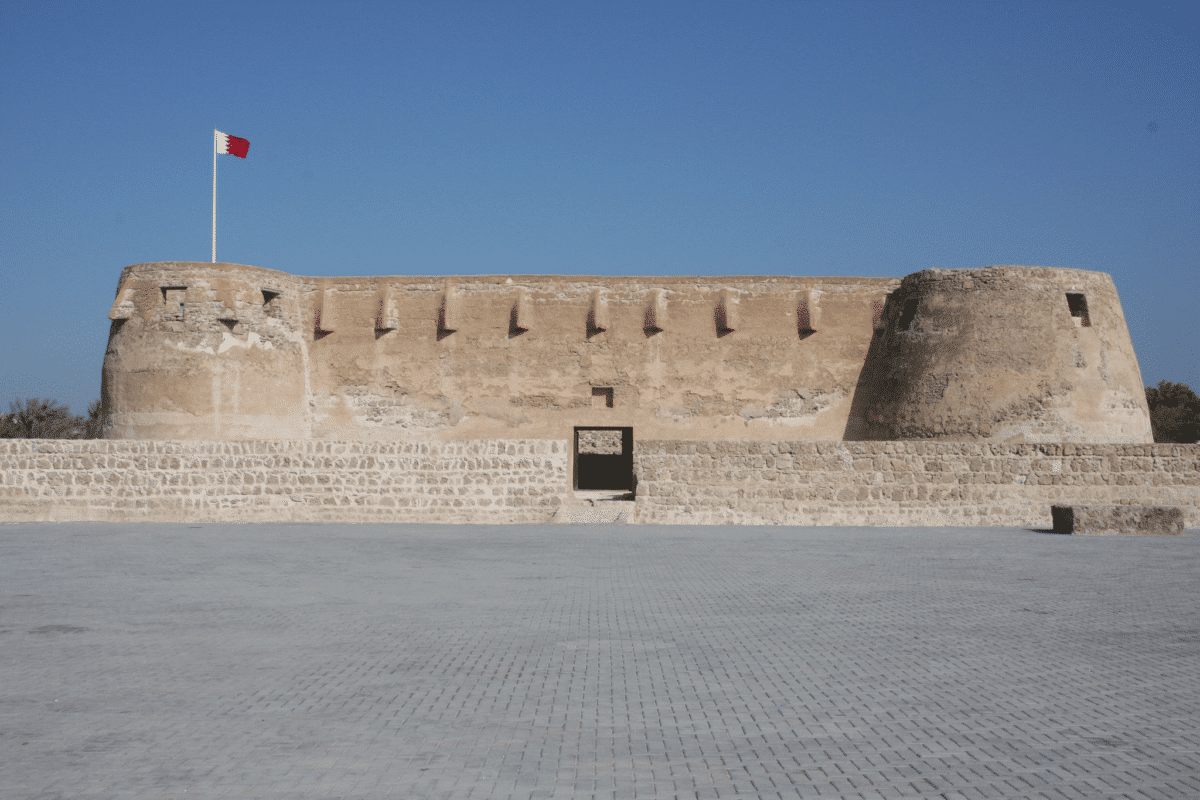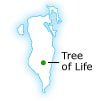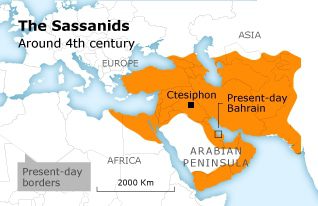
Introduction

Bahrain has long been identified by archaeologists as the ancient island-state of Dilmun where, according to a famous Sumerian epic of the second millennium BCE, King Gilgamesh of Uruk discovered ‘the flower of eternal youth’. Ancient Mesopotamian mythology describes Dilmun as a pure and holy place. Its sweet-water wells and lush vegetation were said to have been a paradise on earth, a happy place where mortals could escape sickness and death. It was in this island-garden, according to one of Sumer’s creation myths, that Enki, the great God of Wisdom and The Sweet Waters under the Earth, impregnated the goddess Ninhursag.
In the past, some Western scholars have even identified Dilmun/Bahrain with the biblical Garden of Eden. They claim confirmation in the lonely old tree that has somehow survived in the desert plain in the centre of the main island. Its local name, ‘The Tree of Life’, has helped fuel scriptural speculation.

Modern scholars dismiss these speculations. The name ‘Dilmun’ may, at an early time, have meant merely ‘lands far away to the south’. It may later have been used also as a Mesopotamian designation for al-Ahsa, in present-day Saudi Arabia. This group of oases has always been geologically and culturally akin to Bahrain and was presumably once part of ‘the greater Dilmun trading empire’. Likewise, Failaka Island, off the coast of Kuwait, almost certainly fell under the influence of Dilmun during part of the second millennium BCE and may therefore also have temporarily borrowed its illustrious name.
Rise and fall of Dilmun
The present archipelago has been inhabited since at least the seventh millennium BCE, when most of its islands were probably still connected to the Arabian mainland. In the late fifth and early fourth millennia BCE – after Bahrain had been separated from the Arabian Peninsula – the main islands were inhabited by small communities that traded, probably through intermediaries, with settlements in southern Mesopotamia. During that era the climate of the Gulf gradually turned more arid, making the Bahrain islands, with their sweet-water springs and extensive palm groves, stand out from the surrounding area. The origins of the Dilmun-paradise myth may therefore be found in much older stories about the lush greenery of these islands. These could have been transmitted by the traders who plied the coastal routes between the settlements of southern Mesopotamia and the Bahrain archipelago
At the end of the fourth millennium BCE the islanders’ trade with southern Mesopotamia appears to have ceased. This was when mysterious ‘Dilmun’ is first mentioned in the Mesopotamian records as a source for copper. But archaeological evidence indicates that by about 3200 BCE Bahrain was inhabited only by small fishing and farming communities. Only around 2500 BCE did more substantial settlements begin to appear on the north-western coast of the main island. It seems that Bahrain had by then established itself as a regional entrepôt for commodities such as timber, dates, and pearls. Because of its convenient location and fresh-water springs, it might well have become the commercial centre of what archaeologists call ‘the greater Dilmun trading empire’.
Hellenization and Sassanids
The first European conqueror to reach the waters of the Gulf was the Macedonian King Alexander the Great (356-323 BCE). After he had defeated the Achaemenids in 331 BCE, Alexander sent out several expeditions to explore the Gulf. In 323 BCE, the year Alexander died, two of his ships reached the coast of Bahrain Island. The Greeks named the archipelago Tylos. Some Hellenistic ruins survive in the north-western part of the island, indicating that a layer of Greek culture was added to the island’s already intricate mixture of Sumerian, Arab, and Persian cultural elements, among others. The Hellenization of Bahrain continued under Alexander’s successors, the Seleucid kings, and their successors, the Iranian Parthians. The Parthians had crushed the Seleucid armies in the second half of the 2nd century BCE and presented themselves as the rightful heirs of Alexander, passing on the flame of eastern Hellenistic culture.
Sassanids

Under Parthian rule Tylos retained its Greek name, which was used alongside its later Persian designation ‘Mishmahig’. Tylos/Mishmahig appears to have been prosperous. The Roman historian Pliny the Elder, writing in the 1st century CE, noted that the islands were famous for the quality of their pearls. In the 4th century the Parthians were conquered by another Iranian dynasty, the Sassanids. The Sassanids were interested primarily in trade, and they controlled the southern coast of the Gulf through proxies among local Arab tribes. The reticence of the Zoroastrian Sassanids about the direct exercise of local power explains why Christian Nestorian communities blossomed in eastern Arabia, while their co-religionists in Persia were being persecuted.
By the early 5th century CE many of Tylos’ inhabitants seem to have been Christians, while others probably continued to worship ancient local deities. Present-day Muharraq and Manama, then known as Samahij and Tilwun respectively, were the seats of Nestorian bishops until at least 835 CE. There was a Nestorian monastery at Samahij, and the Arab governor of Tylos seems to have been Christian. It was one of these Christian governors of Tylos who, according to Muslim tradition, accepted Islam after the Prophet Muhammad invited him to join the Muslim umma (community) in the early 7th century. Christianity in Tylos was only gradually submerged by Islam. Nestorian Christianity may have remained the dominant religion on the islands for a century or more. There is now only a tiny community of indigenous Christians in Bahrain.

